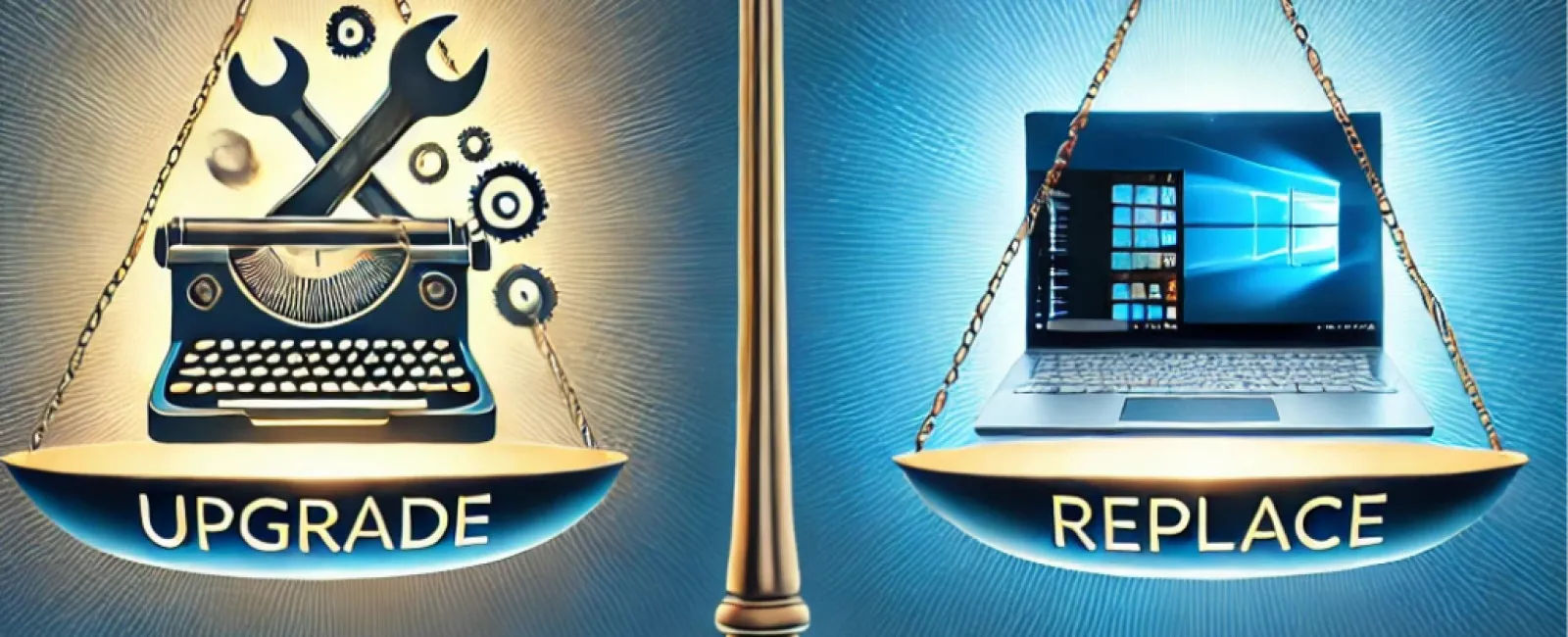February 14, 2025
Windows 10 is approaching its end-of-life, with support concluding in October 2025. This prompts a critical decision for those still using the operating system: should you upgrade to Windows 11 or replace your devices entirely?
Here's a guide to assist you in making the best choice according to your requirements, budget, and objectives.
Step 1: Check Compatibility
First, assess whether your existing hardware aligns with Windows 11's requirements. Microsoft has established stringent criteria to ensure the new OS operates efficiently and securely. Key requirements include:
- A compatible 64-bit processor (1 GHz or faster with at least 2 cores)
- 4 GB of RAM (8 GB or more is recommended for optimal performance)
- 64 GB of storage
- TPM version 2.0 (Trusted Platform Module)
How To Check:
- Utilize Microsoft's PC Health Check tool for a quick compatibility assessment.
- Alternatively, review your device's specifications manually.
Outcome:
If your system does not meet the compatibility standards, you will need to upgrade your hardware or consider a replacement.
Step 2: Evaluate The Age Of Your Devices
Consider the age of your current hardware. Devices older than five years often perform slower and may not meet Windows 11's requirements.
Reasons To Replace Older Devices:
- They are likely close to the end of their life cycle.
- Upgrading components (like RAM or storage) may not yield significant performance gains.
- They present higher security risks due to outdated firmware and hardware vulnerabilities.
Step 3: Assess Your Performance Needs
Determine if your current hardware fulfills your daily requirements. Reflect on:
- Speed: Are your devices hindering your efficiency during important tasks?
- Reliability: Do you face frequent crashes or malfunctions?
- Scalability: Can your existing hardware manage future software updates and increased workloads?
When To Upgrade:
If your devices are functioning adequately, upgrading to Windows 11 could be the most economical option.
When To Replace:
If performance issues are affecting your productivity, replacing your hardware may ultimately be more cost-effective by reducing downtime and inefficiencies.
Step 4: Weigh The Costs
Budget considerations play a crucial role in your decision to upgrade or replace.
Upgrading Existing Devices:
- Generally incurs lower immediate costs (if compatible).
- May involve extra expenses for component upgrades (e.g., adding more RAM).
Replacing Devices:
- Involves a higher initial cost but offers better long-term value.
- Provides newer hardware optimized for Windows 11's capabilities and security.
Step 5: Consider Future-Proofing
Newer devices come with the latest technology, offering:
- Enhanced security features such as hardware-based encryption.
- Improved processing speeds and greater energy efficiency.
- Better compatibility with modern applications and peripherals.
Investing in new devices now can prepare your business for growth and innovation, ensuring your systems remain effective for years to come.
Pro Tip: Involve An IT Professional
If you're still uncertain, collaborating with an IT provider can ease the decision-making process. They can:
- Evaluate your current setup.
- Advise on whether to upgrade or replace based on your specific needs.
- Manage the transition to minimize downtime and disruption.
Take The Next Step
Deciding whether to upgrade or replace your devices
doesn't have to be overwhelming. Start with a FREE Consultation to
evaluate your systems and get personalized recommendations for a smooth
transition to Windows 11.
Click here or give us a call at 702-605-9998 to schedule your FREE Consultation today!
Don't wait until the October 2025 deadline - get ahead
of the game and ensure your business is ready for what's next.




